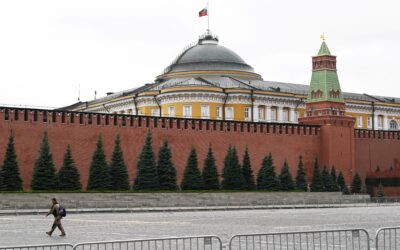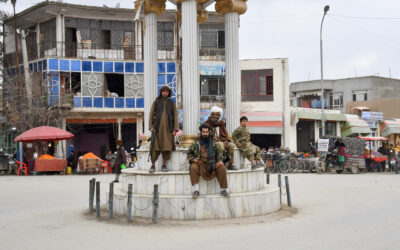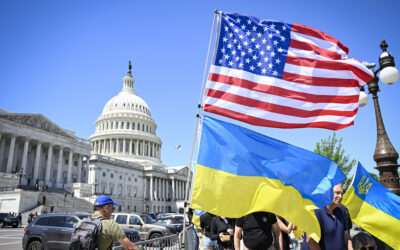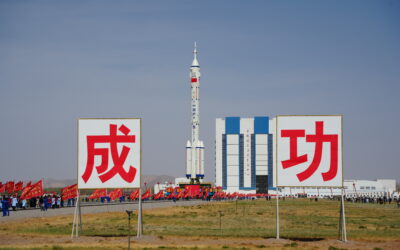
Blindsided by U.S. Ukraine Vote, Kremlin Scrambles to Respond
SUBSCRIBER+ EXCLUSIVE REPORTING — Russia’s reaction to the new infusion of U.S. aid for Ukraine has ranged from shrugs to fury, from warnings of nuclear […] More
The June 12th summit with North Korea will be an important beginning of a process that eventually results in the Complete, Verifiable and Irreversible Dismantlement (CVID) of North Korea’s nuclear weapons and nuclear weapons facilities. This is the goal, but there’s justified skepticism that this objective can be achieved, especially after 2017, when North Korea launched an Intercontinental Ballistic Missile (ICBM) that can reach the continental U.S. and successfully tested a hydrogen bomb. Thus, many are asking: Why would North Korea give it up, after spending billions of dollars over decades to accomplish this capability?
It all depends on Kim Jung-Un, the young leader who studied in Switzerland and wasn’t groomed to replace his father, Kim Jong il. But after almost seven years in power, Kim appears to have consolidated power with the appointment of loyalists, who share his vision, to leadership positions in the government and the party. What is his vision? Based on Kim’s various pronouncements, to include at the Party Congress and in his 2018 New Year’s Address, his focus is on economic reform and improving the standard of living for the 25 million people in North Korea, most living in substandard conditions. Kim has made some modest economic reforms, with private markets and other efforts to increase production and consumption. But with biting sanctions and international isolation, economic development in North Korea will not be possible. In fact, with even greater sanctions, and enforced implementation, North Korea’s economic situation will become even more desperate.
The path to economic reform and a better life for the people in North Korea is normalization of relations with the U.S. This has been a goal of Kim Jung Un and his father, Kim Jong il, but only on North Korea’s terms: Accepting North Korea as a nuclear weapons state. I can’t remember the number of times I was told by my North Korean interlocutors, in formal negotiations and in private conversation, to accept North Korea as a nuclear weapons state, promising to be a good friend of the U.S. They were told then, as they’re told now, that they would never be accepted as a nuclear weapons state, citing the likelihood of a nuclear arms race in the region if North Korea retains nuclear weapons and the proliferation threat of a nuclear weapon or fissile material is provided to a rogue state or terrorist organization.
If Kim Jung Un is serious about true economic reform in North Korea, and a normal relationship with the U.S., he knows that retaining nuclear weapons isn’t an option. Therefore, Kim has to make the strategic decision to commit to CVID if he wants an eventual normal relationship with the U.S. and true economic reform in North Korea. I believe Kim has made this strategic decision, contingent on receiving security assurances, economic development assistance and a path to normal relations with the U.S. The Six Party Talks Joint Statement of September 2005 provided North Korea with these assurances, in return for nuclear dismantlement. At that time, we also made it abundantly clear that a bilateral dialogue to normalize relations with the U.S. could start with liaison offices in our respective capitals, but verifiable progress must be made on human rights issues and their illicit activities, like the counterfeiting of U.S. currency, cigarettes and pharmaceuticals, before full normalization of relations could be achieved.
President Donald Trump’s bold decision to accept the invitation to meet with Chairman Kim is a unique opportunity to get Kim’s commitment to complete, verifiable, irreversible dismantlement of North Korea’s nuclear weapons and nuclear weapons facilities, and the continued moratorium on nuclear tests and missile launches, in return for security assurances, a treaty to end the Korean War, economic development assistance and a path to normal relations with the U.S., with the initial establishment of liaison offices in our respective capitals and a dialogue and eventual resolution of issues dealing with human rights, illicit activities and other weapons of mass destruction. North Korea’s agreement to expeditiously provide a declaration of the number and location of nuclear weapons, and a list of nuclear facilities and personnel would facilitate this process, as would a subsequent experts meeting to codify a verification protocol that would permit international nuclear monitors to visit non-declared suspect nuclear sites in North Korea.
A successful meeting in Singapore will put us on the path to a peaceful resolution of issues with North Korea.
Related Articles

SUBSCRIBER+ EXCLUSIVE REPORTING — Russia’s reaction to the new infusion of U.S. aid for Ukraine has ranged from shrugs to fury, from warnings of nuclear […] More

SUBSCRIBER+ EXCLUSIVE REPORTING — When Chinese President Xi Jinping came to San Francisco last November to meet with President Joe Biden, Chinese pro-democracy activists in […] More

SUBSCRIBER+EXCLUSIVE EXPERT PERSPECTIVE — More than two years after its withdrawal from Afghanistan, the U.S. still does not have a clear way forward in the […] More

SUBSCRIBER+ EXCLUSIVE REPORTING — Ukrainians greeted Saturday’s long-awaited House passage of $60.8 billion in aid with justifiable jubilation. For months, their soldiers, civilians, and political […] More

SUBSCRIBER+ EXCLUSIVE REPORTING — A race for control of space is underway, and just as on earth, the U.S. and China are the top competitors. […] More

SUBSCRIBER+ EXCLUSIVE REPORTING — For nearly a week, the Middle East and much of the world were on a knife’s edge, waiting for a promised […] More
Search